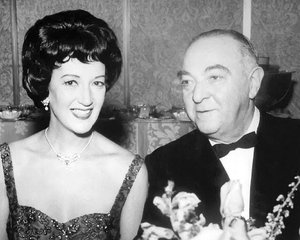But at least it appears that she was able to keep drinking coffee. She also apparently embraced new technology and stayed intellectually sharp (maybe the coffee helped ;).
(p. A1) Maria Branyas Morera, an American-born Spanish woman believed to be the oldest person in the world, died on Monday [Aug. 19, 2024] in Olot, Spain. She was 117.
Her family wrote in a post on her X account that she had died in her sleep. She had been living in a nursing home.
“A few days ago she told us: ‘One day I will leave here. I will not try coffee again, nor eat yogurt, nor pet my dog,’” her family wrote in Catalan in the post. “‘I will also leave my memories, my reflections, and I will cease to exist in this body. One day I don’t know, but it’s very close, this long journey will be over.’”
. . .
Having been born before the emergence of the telephone, Ms. Branyas came to embrace the digital revolution, fashioning herself on social media as “Super Àvia Catalana,” or “Super Catalan Grandma.” She posted bite-size pieces of life advice, observations and jokes to thousands of followers.
In her biography on X, she wrote, “I’m old, very old, but not an idiot.”
. . .
Like many supercentenarians, Ms. Branyas became the subject of scientific fascination. Dr. Esteller, the researcher who studied her genetics and lifestyle, found that her genes were protective against DNA damage, and that she had low levels of fat and sugar in her blood — all of which he said was helpful for living a long life. His research also found that her cells aged much slower than she did, meaning that she had a lower “biological age” than her actual age.
The Catalan diet, which is similar to the Mediterranean diet and includes a lot of olive oil, has also been linked to longer survival, he said. He added that Ms. Branyas liked to eat yogurt.
“What do you expect from life?” a doctor once asked Ms. Branyas while retrieving blood samples for study, according to El País.
Ms. Branyas, unmoved, answered simply: “Death.”
For the full obituary see:
(Note: ellipses, and bracketed date, added.)
(Note: the online version of the obituary was updated Aug. 22, 2024, and has the title “Maria Branyas Morera, World’s Oldest Person, Dies at 117.”)


